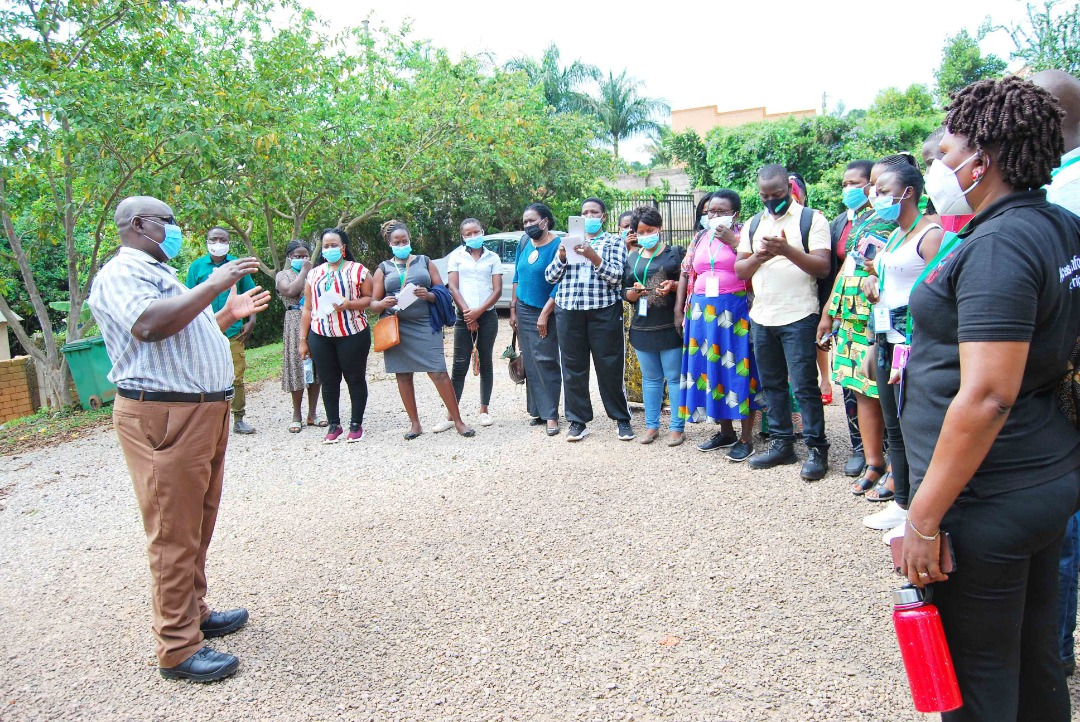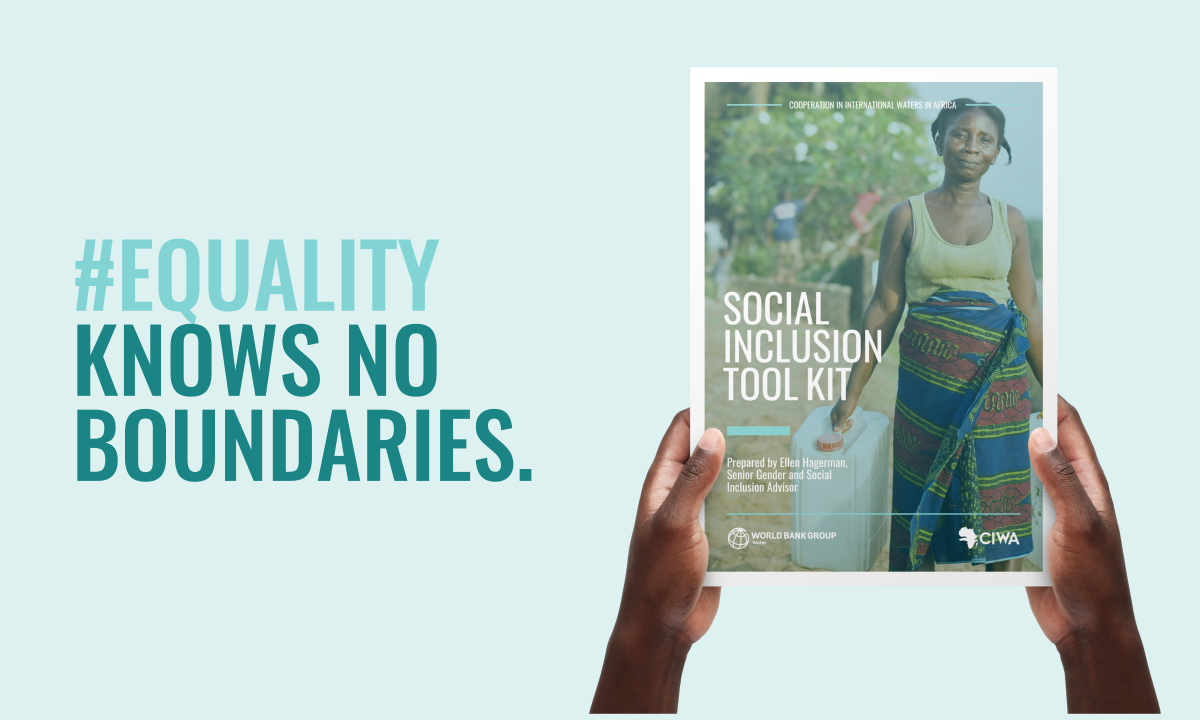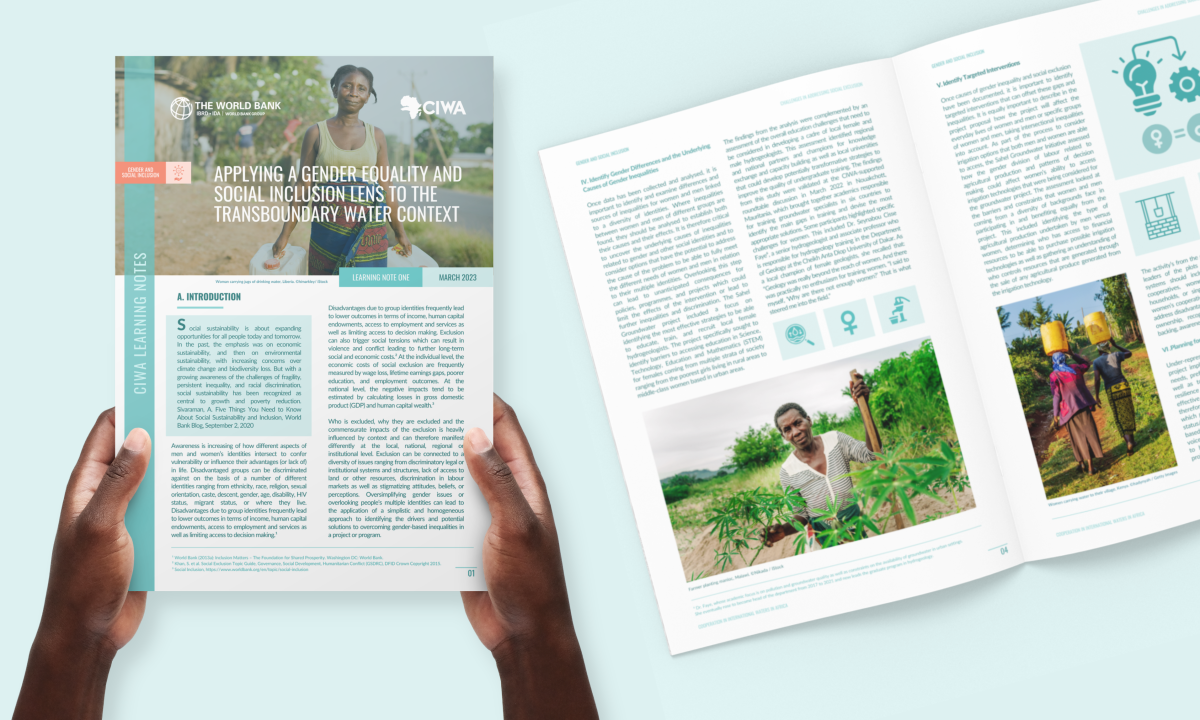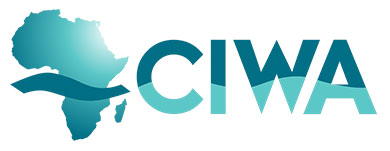Leaving No One Behind, reflections on CIWA’s Integration of a Social Inclusion Perspective
Posted in : Blog on 28 February 2023
A central commitment to the implementation of the Sustainable Development Goals (SDGs), including SDG 6 (clean water and sanitation for all) is to “leave no one behind.” Key to this concept is the importance of prioritizing actions that benefit and empower women (including women in all their diversities), the poorest, people with disabilities, sexual and gender minorities (SGM) and the most marginalized people in communities. The Cooperation in International Waters in Africa (CIWA) seeks to promote a broad-based understanding of social inclusion across all levels and sectors of the projects that it supports.
More and more people have become aware of how aspects of men and women’s identities intersect to confer advantages or disadvantages. Those who are disadvantaged can be discriminated against on the basis of a number of different identities ranging from ethnicity, race, religion, sexual orientation, caste, descent, gender, age, disability, HIV status, migrant status, or where they live. Who is excluded, why they are excluded and the commensurate impacts of the exclusion is also influenced by context and can manifest differently at the local, national or institutional level including at the transboundary level.
The World Bank positions social inclusion as creating opportunities for all people while addressing deep-rooted systemic inequalities. The Cooperation in International Waters in Africa (CIWA), a World Bank multi-donor partnership that supports riparian governments in Sub-Saharan Africa to address constraints to cooperative management and development of transboundary waters, recognizes the importance of applying a social inclusion lens to its work as part of its commitment to a transformative approach to gender and social inclusion. When conducting social inclusion analyses CIWA seeks to determine whether men and women and the different social identities they occupy have the same access to and control of roles, power, and resources at the institutional, regional, national and local level.
“If we don’t include all the voices, how can we expect agreements to be sustainable?” – Anders Jagerskog, CIWA Program manager
Aside from conducting a social inclusion analysis, some of the key steps CIWA has taken at the planning phase to ensure the integration of a social inclusion perspective include:
- Conduct a Stakeholder Mapping and Engagement to Identify Excluded Groups
A critical action CIWA adopts when undertaking any gender and social inclusion analysis is to conduct stakeholder mapping to identify which disadvantaged groups should be considered because of their potential to have a positive or negative impact on achieving the objectives of the project or program. When developing the CIWA-funded Analytical Study for the Improving Water Quality in the Lake Victoria Basin Project, a stakeholder mapping was undertaken using a web-based search to identify stakeholders who were connected directly and indirectly to the use of water and who would have knowledge about the situation of specific vulnerable groups needing access to clean water in the Great Lakes region.
- Collect Qualitative and Quantitative Data
While it is a standard practice to conduct research, CIWA has found that applying a social inclusion approach requires mainstreaming intersectional gender approaches in data collection and analysis to better understand how women and men within different social groups and geographical locations could be affected differently. The Untapping Resilience: Groundwater Management and Learning in the Horn of Africa’s Borderlands provides an example that illustrates the importance of data collection related to a specific dimension of social inclusion. Because the Horn of Africa is an area characterized by marginalization, conflict and fragility, data collected through this Analytical Study is focused on vulnerable groups located in the Fragility, Conflict and Violence (FCV) space.
- Identify Differences Linked to Identity and the Underlying Causes of Inequalities
Once data has been collected and analyzed, it is important to identify and examine differences and sources of inequalities for women and men linked to a diversity of identities. The Sahel Groundwater project included a focus on identifying the most effective strategies to be able to educate, train, and recruit local female hydrogeologists. The project specifically sought to identify barriers to accessing education in Science, Technology, Education and Mathematics (STEM) for females coming from multiple strata of society ranging from the poorest girls living in rural areas to middle-class urban women.
- Identify Targeted Interventions to Address Social Exclusion
Too often analysis is undertaken without identifying targeted interventions that can offset these gaps and inequalities. In the concept note CIWA looks for information on how the project will affect the everyday lives of women and men or specific groups of women and men, taking intersectional inequalities into account. As part of the process to consider irrigation options that both men and women can access, the Sahel Groundwater Initiative assessed how the gender division of labour related to agricultural production and patterns of decision making could affect women’s ability to access irrigation technologies. To ensure the application of a social inclusion lens, the assessment looked at the barriers and constraints that women and men coming from a diversity of backgrounds face in participating in and benefiting equally irrigation technology. This included determining who has access to financial resources to be able to purchase possible irrigation technologies as well as gathering an understanding of who controls resources that are generated through the sale of any agricultural produce generated from the irrigation technology.
- Planning for Implementation
Under-represented groups should be involved in project implementation to ensure that their differing needs, preferences, and constraints are addressed as well as to ensure that their local knowledge and resilience strategies are accessed to develop more effective and equitable solutions. CIWA prioritized Gender and Social Inclusion in Phase II of the Sustainable Groundwater Management project in SADC member states because the team determined that greater inclusion in water resources management was key to producing economic, social, environmental, and financial benefits as well as being able to foster effective implementation of groundwater management interventions. The project also aimed to promote the role of women and vulnerable populations as principal educators and leaders of home- and community-based water and sanitation practices.

While the more in-depth measures articulated above tend to be undertaken by gender and social inclusion experts working on CIWA teams, concretely CIWA seeks to promote a broad-based understanding of social inclusion across all levels and sectors of the projects that it supports. Specific measures include offering training to project staff and partners on gender and social inclusion, developing tools and resources on social inclusion such as the recently developed social inclusion tool kit and communicating about our experience applying a social inclusion lens with the Social Inclusion Learning Note (see below).
CIWA ‘ SOCIAL INCLUSION TOOLKIT

CIWA has developed a tool kit specifically targeted to social development and related experts working to provide technical expertise on the development and implementation of CIWA programming at the institutional and project level. Working together with CIWA teams, it provides significant detail to assist experts to understand the critical steps they can take to facilitate the integration of social inclusion considerations throughout the project cycle. This note has been developed to provide an overview to CIWA staff members and partners of some of the main steps that can be taken so they can play a support role in the development and implementation of socially inclusive programs within the transboundary water context at the project and institutional level.
CIWA’ SOCIAL INCLUSION LEARNING NOTE

The objective of this new GESI Learning Note is to highlight some key lessons learned and best practices related to the integration of a social inclusion perspective into CIWA’s work. This approach involves a more in-depth disaggregation of male and female target audiences to identify and determine actions that should be taken in relation to identified vulnerabilities. The Learning Note draws upon CIWA’s own approach and experience undertaking GESI analysis by documenting specific steps that were taken at the project development phase of transboundary water projects.
Learn more
BLOGS
Green homes for sustainable development in slum communities (women and youth training)
PUBLICATIONS
Gender and Social Inclusion Learning Notes
ENSURING GENDER AND SOCIAL INCLUSION IS CONSIDERED AT THE PROJECT CONCEPT PHASE
World Bank Gender Strategy 2016-2023
Caroline Moser, Mainstreaming gender & inclusion in urban programming – ICED Facility – Feb, 2 2017


